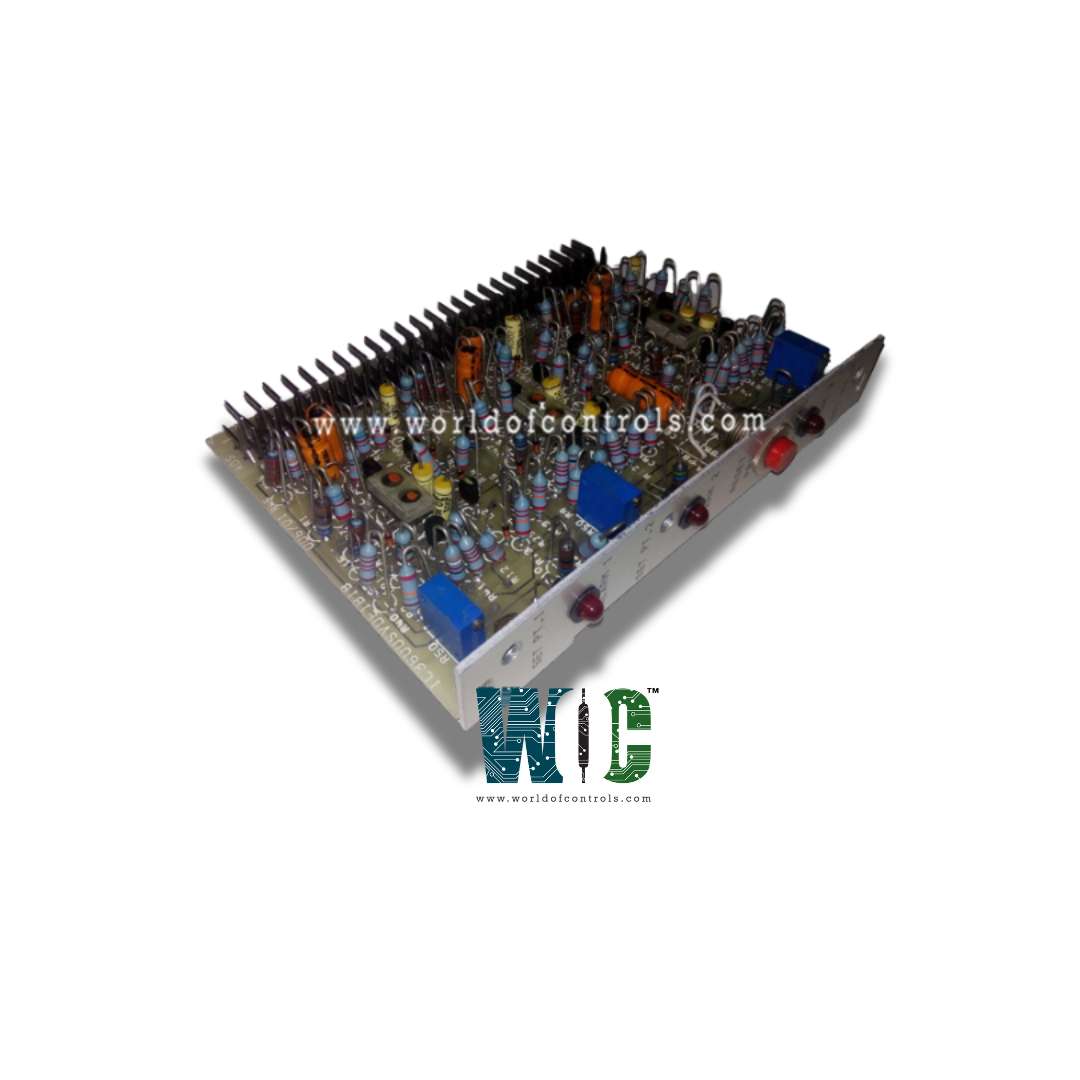
World Of Controls understands the criticality of your requirement and works towards reducing the lead time as much as possible.
IC3600SVDE1B1B - Vibration Alarm Card is available in stock which ships the same day.
IC3600SVDE1B1B - Vibration Alarm Card comes in UNUSED as well as REBUILT condition.
To avail our best deals for IC3600SVDE1B1B - Vibration Alarm Card, contact us and we will get back to you within 24 hours.
SPECIFICATIONS:
Part Number: IC3600SVDE1B1B
Manufacturer: General Electric
Series: Mark I & II
Function: Vibration Detection and Alarm
Number of Blue Potentiometers: 3
Response Time: <1 sec
Operating Temperature Range: 0°C to +60°C
Number of Red LEDs: 3
Dimensions: 15.2 cm x 17.8 cm
Availability: In Stock
Product of Origin: U.S.A
FUNCTIONAL DESCRIPTION:
IC3600SVDE1B1B is a Vibration Alarm Card manufactured and designed by General Electric as part of the Mark I & II Series used in gas turbine control systems. Monitor analog vibration signals from sensors (e.g., accelerometers or velocity pickups) mounted on rotating equipment. When vibration exceeds preset thresholds, the card triggers alarms or protective shutdown actions to prevent machinery damage. It features adjustable potentiometers, status LEDs, and onboard surge protection via MOVs.
INSTALLATION:
The card features a gold-plated edge connector, which ensures proper electrical contact with the rack’s backplane. Care must be taken to align the connector properly when inserting the card to prevent damage or poor connections. The card is designed to receive input signals from vibration sensors, which are typically accelerometers or velocity transducers, wired directly to the system’s backplane. Once installed, the card will receive power, typically 28 VDC, from the backplane and start operating automatically. To ensure proper functioning, the installation environment should maintain an ambient temperature range between 0°C to +60°C. Additionally, it’s essential to follow electrostatic discharge (ESD) protection protocols while handling the card to avoid damage to sensitive components.
OPERATION:
These sensors measure vibrations in rotating equipment, and the card processes the analog input signals, typically within a range of 0–10 VDC. Operators can adjust the sensitivity and vibration threshold by tuning the card's three potentiometers, allowing it to activate an alarm or shutdown at the desired vibration level. The card includes three red LEDs that indicate the operational status—whether the system is functioning normally, or if there is an alarm or trip condition. When vibration exceeds the preset threshold, the card sends a relay output signal to the control system, which can either trigger an alarm or initiate an emergency shutdown to protect the equipment.
WOC maintains the largest inventory of Replacement Parts for GE Speedtronic Turbine Control Systems. Additionally, we offer warranty-backed unused and rebuilt boards as well as board repairs for your damaged ones. For your OEM needs, our team of professionals is available around the clock. We at WOC are happy to help you with any needs you may have in terms of automation. Please contact our team by phone or email for pricing and availability on any components and repairs.
What is the function of the Vibration Alarm Card?
The Vibration Alarm Card is designed to monitor vibration signals from sensors on rotating machinery such as turbines. It detects when vibration levels exceed a predefined threshold and triggers an alarm or protective shutdown to prevent damage to the equipment.
How do I connect the vibration sensors to the card?
The card is designed to receive input from vibration sensors such as accelerometers or velocity sensors. These sensors are typically wired to the card via the backplane, which connects to the appropriate slots in the GE Speedtronic Mark I/II turbine control system. The signal input range is generally 0-10 VDC, with the card processing the data from the sensors to detect excess vibration.
How does the Vibration Alarm Card process the vibration signals?
The card processes vibration signals through an analog-to-digital conversion (ADC) and uses internal signal conditioning circuits, such as low-pass filters, to eliminate noise. This ensures accurate detection of significant vibration levels that could indicate machinery problems.